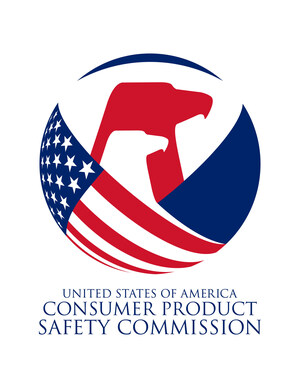WASHINGTON, June 26, 2012 /PRNewswire-USNewswire/ -- A special study conducted by CPSC staff found that 65 percent of all fireworks injuries in 2011 were sustained during the 30 days surrounding the Independence Day holiday. More than half of these injuries were the result of unexpected ignition of the device or consumers not using fireworks as intended. Fireworks injuries most often resulted in burns to the hands and head, including the eyes, face, and ears. According to the special study, sparklers, firecrackers, and aerial devices were associated with the most incidents.
(Logo: http://photos.prnewswire.com/prnh/20030904/USCSCLOGO)
Whether it is the sparkle of the bright lights, or the thunderous boom of the explosion, there is no denying the thrill that fireworks can bring to an Independence Day celebration. Unfortunately, when consumers get their hands on professional fireworks, the results can be deadly. Last year, CPSC received reports of four consumers who were killed by either professional-grade or homemade firework devices, while an estimated 9,600 consumers were injured.
"For thousands of consumers, last year's 4th of July celebration ended with a visit to the emergency room," said CPSC Chairman Inez Tenenbaum. "CPSC wants you to understand the risks with legal and illegal fireworks, in order to prevent an injury, or worse, during this holiday."
While the majority of fireworks injury reports involve emergency room treatment and release, CPSC is aware of more severe and fatal injuries that are associated with consumer use of professional-grade and homemade fireworks. Reports of faster-than-expected explosions and unpredictable flight paths of aerial devices have resulted in tragic consequences for some consumers.
In the four reported fireworks-related deaths, the victims were killed when the illegal devices exploded, causing severe trauma to the head and face, and resulting in decapitation in one incident. In other incidents involving professional-grade or homemade devices, the victims reportedly sustained severe burns and the loss of fingers.
On the grounds of the Washington Monument today, Chairman Tenenbaum led the agency's annual fireworks press event, including a live demonstration of the dangers associated with fireworks and provided consumers with commonsense steps to prevent injuries this year. The Chairman was joined by Arthur Herbert, Assistant Director of Enforcement Programs and Services with the Bureau of Alcohol, Tobacco, Firearms, and Explosives (ATF), and Cynthia Quarterman, Administrator of the Pipeline and Hazardous Materials Safety Administration with the Department of Transportation (DOT).
CPSC and its federal partners highlighted continued import surveillance and enforcement actions to prevent hazardous firework devices from reaching the U.S. marketplace. CPSC and its partners at ATF and DOT are committed to stopping the manufacture, importation, and sale of illegal fireworks.
Consumers who decide to purchase legal fireworks are urged to take these safety steps:
- Make sure fireworks are legal in your area before buying or using them.
- Never allow young children to play with or ignite fireworks. Parents may not realize that young children suffer injuries from sparklers. Sparklers burn at temperatures of about 2,000 degrees—hot enough to melt some metals.
- Always have an adult closely supervise fireworks activities if older children are allowed to handle devices.
- Avoid buying fireworks that are packaged in brown paper because this is often a sign that the fireworks were made for professional displays and that they could pose a danger to consumers.
- Never place any part of your body directly over a fireworks device when lighting the fuse. Back up to a safe distance immediately after lighting fireworks.
- Keep a bucket of water or a garden hose handy in case of fire or other mishap.
- Never try to relight or handle malfunctioning fireworks. Soak them with water and throw them away.
- Never point or throw fireworks at another person.
- Light fireworks one at a time, then move back quickly.
- Never carry fireworks in a pocket or shoot them off in metal or glass containers.
- After fireworks complete their burning, douse the spent device with plenty of water from a bucket or hose before discarding it to prevent a trash fire.
CPSC is charged with protecting the public from unreasonable risks of injury or death associated with the use of the thousands of consumer products under the agency's jurisdiction. Deaths, injuries, and property damage from consumer product incidents cost the nation more than $900 billion annually. CPSC is committed to protecting consumers and families from products that pose a fire, electrical, chemical, or mechanical hazard. CPSC's work to ensure the safety of consumer products—such as toys, cribs, power tools, cigarette lighters, and household chemicals—contributed to a decline in the rate of deaths and injuries associated with consumer products over the past 30 years.
CPSC Hotline: (800) 638-2772
CPSC Media Contact: (301) 504-7908
SOURCE U.S. Consumer Product Safety Commission
WANT YOUR COMPANY'S NEWS FEATURED ON PRNEWSWIRE.COM?
Newsrooms &
Influencers
Digital Media
Outlets
Journalists
Opted In





Share this article